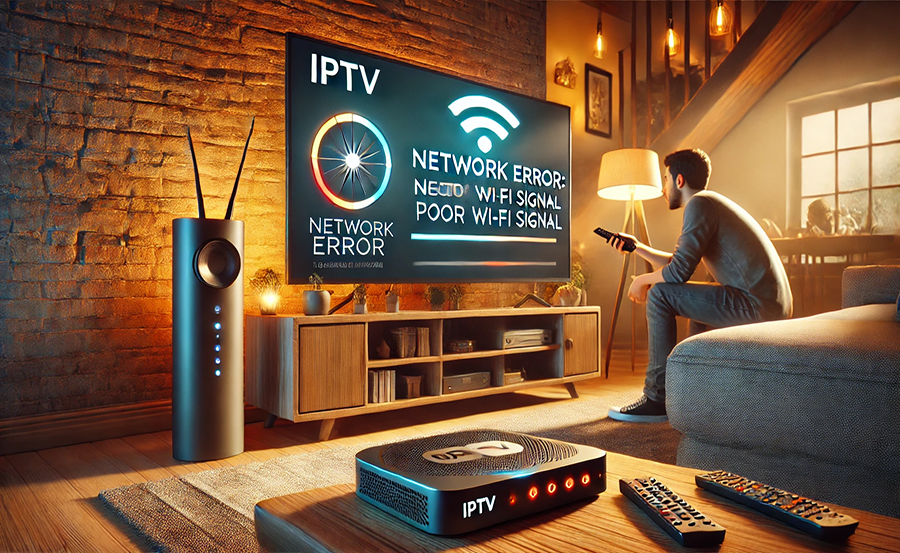In today’s fast-paced world, uninterrupted streaming is not just a luxury—it’s a necessity. With the rising popularity of IPTV services, streaming quality has become a hot topic. However, the annoying devil of lag can ruin the experience, causing frustration for viewers everywhere.
Understanding IPTV Technology
Internet Protocol Television (IPTV) represents a new era in television broadcasting. Unlike traditional methods, IPTV delivers content through the Internet, offering a myriad of channels and on-demand services. It’s a game-changer for those tired of cable clutter.
IPTVUSA has emerged as a front runner by providing the best IPTV subscription, applauded for its vast array of channels and reliable service. But why does lag still happen?
What Is IPTV Lag?
Lag, in the simplest terms, is a delay between an action and its response. In IPTV, it’s that pesky interruption or buffering that disrupts your viewing. Lagging can take various forms, from annoying pauses to full-blown freezes.
The goal is smooth, real-time streaming, and discovering the root causes of lag is key to achieving this. Let’s break it down.
Common Causes of IPTV Lag
Network Bandwidth Issues
One primary reason for IPTV lag is insufficient bandwidth. Streaming high-definition content demands significant data transfer, and if your Internet connection isn’t up to par, lag will be inevitable.
Here’s what to consider:
- Your internet speed: Ensure it meets the minimum requirements for streaming.
- Network congestion: Multiple devices using the same network can cause slowdowns.
- Time of day: Peak hours can result in bandwidth throttling by ISPs.
Device Compatibility
Not all devices are created equal. Older hardware or inadequate specifications can hinder smooth streaming. Make sure your device is compatible with IPTV applications.
It might be worth checking:
- CPU performance: Favor hardware with strong processing capabilities for better handling of data.
- Software updates: Running the latest firmware can improve performance significantly.
Server Overload
Sometimes, the issue doesn’t even lie with you but the IPTV provider. Overloaded servers can’t handle the demand, leading to lag. Choosing a trusted provider like IPTV USA, known for its robust infrastructure, can mitigate this.
IPTV USA employs optimized servers designed to manage high traffic efficiently, ensuring a seamless experience for its subscribers.
Troubleshooting IPTV Lag
Conducting a Speed Test
The first step is to check your Internet speed. Several online tools can measure your connection’s performance, giving insight into whether it meets streaming requirements.
Buy 1 Year IPTV Subscription and Enjoy Unlimited Content
Improving your connection might involve repositioning your router, upgrading your plan, or switching to wired Internet instead of relying on wireless.
Optimizing Device Settings
Multitasking can impede streaming quality. Close unnecessary applications that may be hogging bandwidth. Adjust streaming quality settings to match your current Internet speed to prevent buffering.
Regular maintenance, such as cache clearing and software updates, can also enhance performance.
Choosing a Reliable IPTV Provider
Ensure your provider is reputable. IPTV USA is renowned for offering the best IPTV subscription, characterized by high uptime and minimal lag. Our servers are not only fast, but consistently upgraded to accommodate growing subscriber bases without hiccups.
Enhancing Your IPTV Experience
Upgrading Internet Plans
For those frequently experiencing lag, reviewing your Internet package might be the solution. Higher tiers often come with greater bandwidth allocations, suitable for streaming enthusiasts.
Contact your ISP for recommendations based on your streaming habits. This proactive step might be what turns lag into seamless viewing.
Utilizing Ethernet Connections
While Wi-Fi offers convenience, nothing beats the stability of an Ethernet connection. By connecting your streaming device directly to the router, you reduce the risk of interference and packet loss, common causes of IPTV lag.
Consider this switch as a definitive step toward a better IPTV experience.
Leveraging Premium IPTV Services
Finally, embrace premium services. IPTVUSA provides a premium option that guarantees priority streaming, reducing the incidence of lag during peak times significantly.
Choosing this ensures access to the most exclusive content and enhances your overall viewing quality.
Steps to Prevent Future IPTV Lag
Regularly Update Your Equipment
Technology ages quickly. Keeping routers, modems, and streaming devices updated ensures they can handle advanced streaming requirements. Check for firmware updates and consider replacing equipment that can no longer keep up.
By staying ahead of technical obsolescence, you keep lag at bay.
Monitor Your Internet Usage
Understand how your bandwidth is being used. Use network-monitoring tools to identify bandwidth-heavy applications and manage them accordingly.
This insight helps allocate the necessary resources for streaming and minimizes lag occurrences.
The Ultimate IPTV Experience with IPTV USA
By understanding lag and proactively managing the common factors, viewers can enjoy an impeccable IPTV experience. IPTV USA symbolizes not just quality and variety but a commitment to customer satisfaction, ensuring that your streaming journey is consistently smooth.
Whether you’re a casual viewer or a dedicated binge-watcher, choosing the best IPTV subscription makes all the difference. Face less lag and more excitement with IPTV USA.
Frequently Asked Questions

Why does my IPTV lag during peak hours?
Peak hour lag is generally due to high traffic on ISP networks. This congestion slows down Internet speeds and affects streaming quality. Upgrading your Internet plan or choosing a provider like IPTV USA, known for excellent bandwidth management, can help alleviate this issue.
Can changing my IPTV provider reduce lag?
Absolutely! If your current provider’s servers are consistently overloaded, switching to a reliable provider like IPTV USA, which offers the best IPTV subscription, may improve your streaming experience by reducing lag significantly.
Is Wi-Fi or Ethernet better for IPTV?
While both have their advantages, Ethernet provides a more stable and interference-free connection, making it the preferable choice for minimizing IPTV lag and optimizing streaming performance.
How often should I update my streaming devices?
It’s advisable to update your streaming devices whenever new software updates are available. Regular updates can resolve performance issues and enhance compatibility, effectively reducing instances of lag.
What role does device compatibility play in lag?
Device compatibility is crucial. Using outdated or underpowered hardware can lead to lag because they’re unable to handle the demands of modern IPTV applications. Ensure your devices meet the recommended specifications for optimal performance.
What Internet speed is recommended for HD streaming?
For HD IPTV streaming, a minimum speed of 5 Mbps is recommended, but for smoother, high-quality viewing, aim for at least 10 Mbps. Consistently checking your internet speed and upgrading if necessary helps mitigate lag.
Are free IPTV providers more likely to lag?
Free IPTV services often lack the necessary infrastructure to manage high traffic, leading to frequent lag issues. Opting for paid services like IPTV USA, which offer robust server capabilities, minimizes this risk significantly.
Stay Ahead with Lazy IPTV Setup: A Comprehensive Guide

